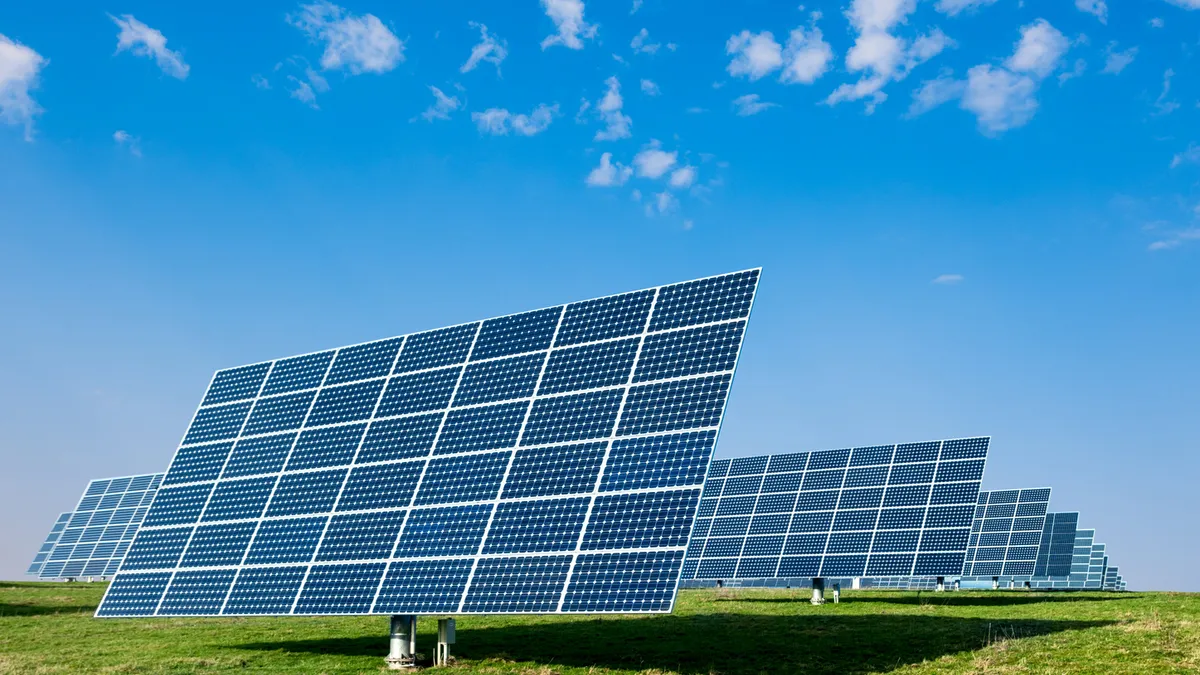The following is a contributed article by Michael K. Dorsey, a partner and co-founder of IberSun Solar and treasurer for the Sunrise Movement.
The coronavirus pandemic has quickly brought about profound change in all aspects of personal and public life but examples of business-as-usual policymaking persist.
For example, despite opposition from business, environmental and good government groups, a law went into effect in Ohio this year that one critic described as “the worst piece of legislation in the 21st century.” We now know it was even worse than thought.
FirstEnergy Solutions secured state elected officials’ approval to collect $1 billion in ratepayer surcharges, spread out over six years, to continue to operate two nuclear power plants it owns in the state. The company claimed that without the ratepayer subsidy it would have to close the plants, idling thousands of workers and harming local communities. FirstEnergy Solutions, a 2017 spinoff of the energy giant FirstEnergy, is now called Energy Harbor.
That appears to have been an overstatement. In what the Cleveland Plain Dealer called a “disgusting turn,” Energy Harbor has initiated a $300-million stock buy-back program. It recently decided to boost it by $500 million, indicating Energy Harbor is flush even without surcharges on power bills. So in short, the company is receiving a $1 billion taxpayer bailout while also enriching its shareholders with an $800 million stock buyback.
This is crony capitalism at its worst. For years, Akron-based FirstEnergy Corp. was one of the state’s most conspicuous political contributors, doling out $1.35 million to elected officials since 2014 and an even larger sum to state political parties. The money and lobbying seem to have worked.
In addition to the jaw-dropping giveaway for FirstEnergy’s shareholders and ratepayer subsidies for the two nuclear plants, the law scales back goals for increasing the portion of power generated from renewables. This is a shortsighted and market distorting. Renewables are cost competitive with other power sources. They might no longer need subsidies, but House Bill 6 actively seeks to hinder their adoption to benefit nuclear power.
Nuclear power has never been the safest and most fiscally prudent way to generate power. All too often it crowds out or impedes game-changing innovations we need in renewable technology — California's shuttered Diablo Canyon plant is a case in point.
The exponential adoption of cheaper, safer and more lucrative renewable energy generation has helped reduce carbon emissions and benefit the economy. Over the past decade, U.S. solar industry jobs alone grew five times faster than job growth in the overall economy. Renewables, mostly solar and wind, represented almost three quarters of all new added energy capacity globally last year, according to data from the International Renewable Energy Agency (IRENA). The International Energy Agency reports renewable power capacity is likely to expand by 50% between now and 2024.
The relative low cost of power produced by renewables has eased today’s economic hardships — and will continue to do so far into the future. This will accelerate their adoption, according to energy industry analysts. Part of this will accelerate further with advances in battery technology, but laws such as Ohio’s HB 6 could impede such innovation.
The pandemic struck at a volatile time in the energy sector, raising with new urgency old questions about balancing economic and environmental imperatives. Before most people understood the enormity of the pandemic, there was so much oil sloshing around in the market that the sudden drop in demand forced the price of a barrel of crude into negative territory. With so much human activity now paused, the world is cleaner. We have marveled at images of Mt. Everest, visible from 120 miles away for the first time in generations.
Of course, this is just a pause. Making permanent and dramatic changes to national energy policies or addressing access to healthcare and educational opportunities, catastrophic economic inequities, and other challenges will await officials after the election. Our immediate responsibility is to sustain families and businesses harmed by the stringent but necessary public health guidelines that put the economy on ice. However, at the very least, we cannot allow the incremental undermining of progress to date toward sensible energy policies.
If Energy Harbor is using ratepayers to boost the fortunes of a select group of investors, it should give the money back the way 63 public companies (and counting) returned pandemic-related federal loan guarantees worth about $510 million. Ohio educators are concerned about a $300 million shortfall in K-12 public education as the pandemic sharply reduces tax revenues: That is almost exactly the amount of the first phase of Energy Harbor’s stock buyback.
That will not happen, of course. However, as public officials consider post-pandemic energy policy options, the Energy Harbor case should admonish them to turn away from the influences of special interests that would undo past gains or impede progress toward a cleaner energy future.





















